Math All Day: 14 Ways to Teach Young Children Math Skills During Daily Routines
April 13, 2021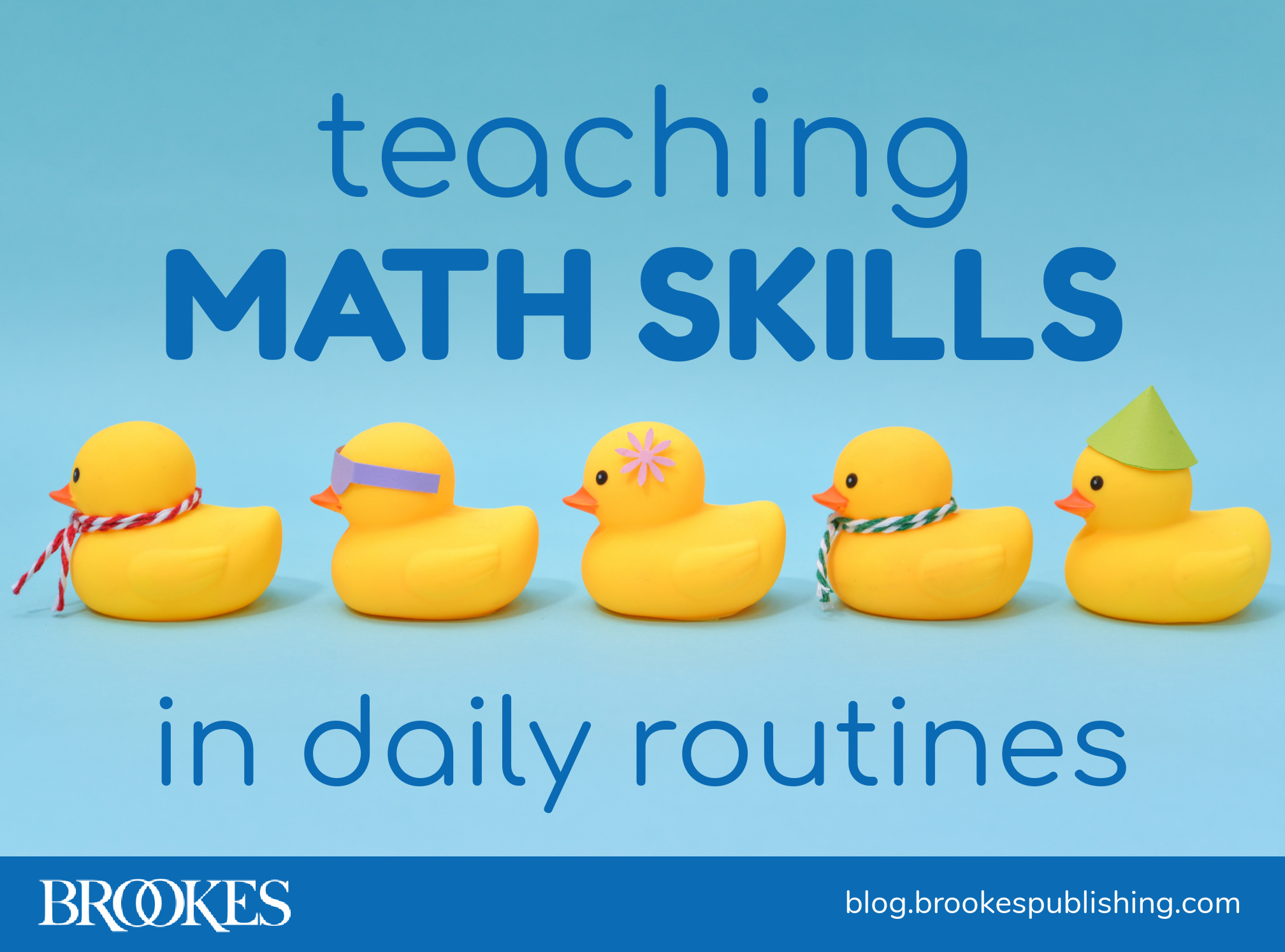
Getting young children ready for long-term math success requires more than a great preschool or kindergarten teacher. For young children, developing a strong foundation of basic math concepts is easier when their families join in too, finding fun and creative ways to slip little math-related lessons and challenges into everyday activities.
In today’s post, we’ll take you through the broad strokes of a typical day’s schedule with a young child and offer up some specific ideas for infusing math into each one. Adapted from Let’s Talk About Math by Donna Kotsopoulos and Joanne Lee, these easy, no-cost ideas are great for sharing with parents of young children.
While your child gets dressed…
 …look for ways to introduce numbers and even shapes. Count out clothes with your child (this can also help with organization!), count body parts as you put clothes on (“that’s one arm through the sleeve!”), and count buttons, pockets, and zippers. To help your child learn about shapes, look for and identify shapes in their clothing, such as circles, triangles, squares, and rectangles. (Quick tip: Have your child lay out their clothing the day or night before. This can be a great opportunity to practice counting or even engage in spatial reasoning, if you ask them to lay out the clothes in a specific configuration or space.)
…look for ways to introduce numbers and even shapes. Count out clothes with your child (this can also help with organization!), count body parts as you put clothes on (“that’s one arm through the sleeve!”), and count buttons, pockets, and zippers. To help your child learn about shapes, look for and identify shapes in their clothing, such as circles, triangles, squares, and rectangles. (Quick tip: Have your child lay out their clothing the day or night before. This can be a great opportunity to practice counting or even engage in spatial reasoning, if you ask them to lay out the clothes in a specific configuration or space.)
While your child brushes teeth…
…set a small egg timer. Not only will this help your child brush their teeth for long enough, it’ll also help them develop a sense of elapsed time. Kids might also like to count the growing number of teeth in their mouth as they brush each one independently or with help.
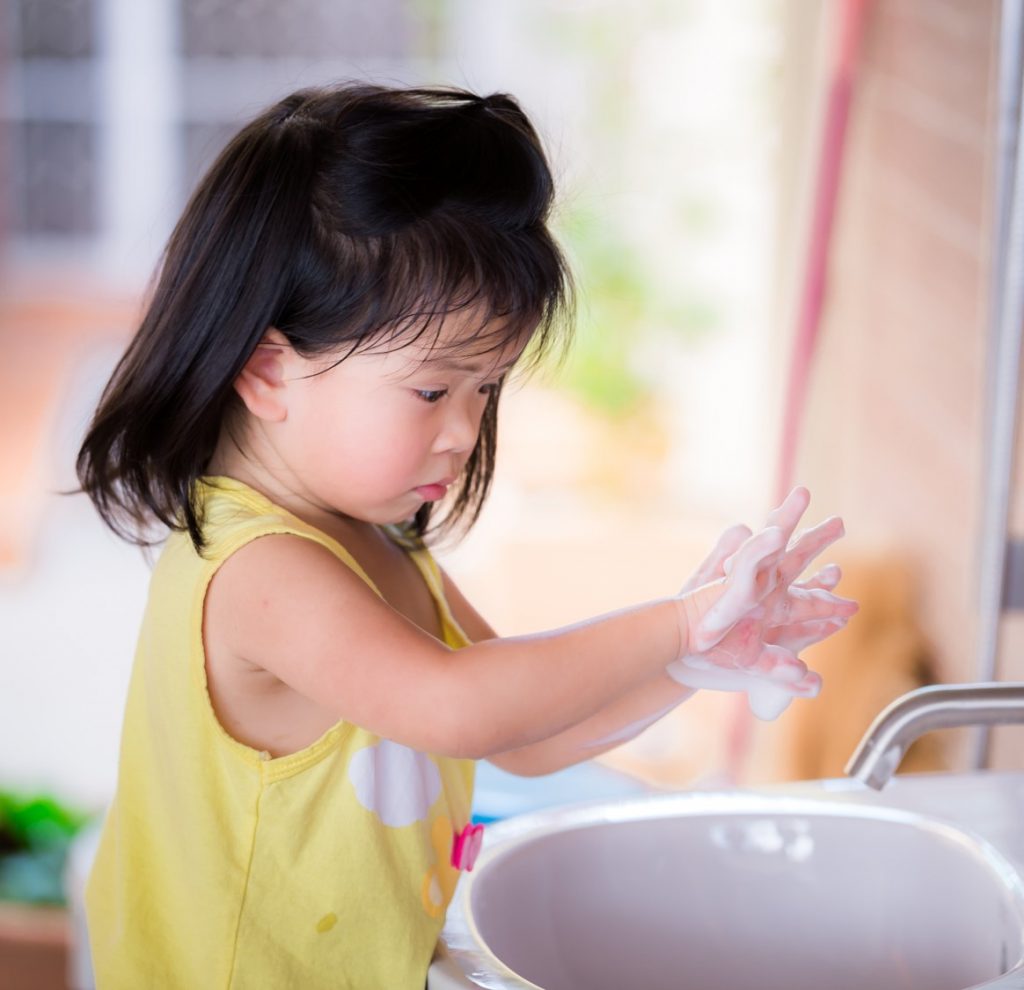 While your child washes hands…
While your child washes hands…
…count the squirts of soap and then count to 20 together while a child washes. This will reinforce both counting knowledge and thorough hand washing. At the end of the washing, you can even check to make sure all the fingers are happily cleaned by counting each one.
While you’re making a to-do list…
…ask the child to help you make your numbered list and then keep track of the things you complete. Stickers and pictures can be used instead of words for very young children.
While you’re waiting around…
…make it a math game, no matter where you are. If you’re stuck in traffic or waiting for a store to open, count the red cars together or see if there are more blue or red cars in the parking lot. If you’re waiting in line at the grocery store, count the items in your basket, count the colors or sides on a cereal box, and find the biggest and smallest items in your cart.
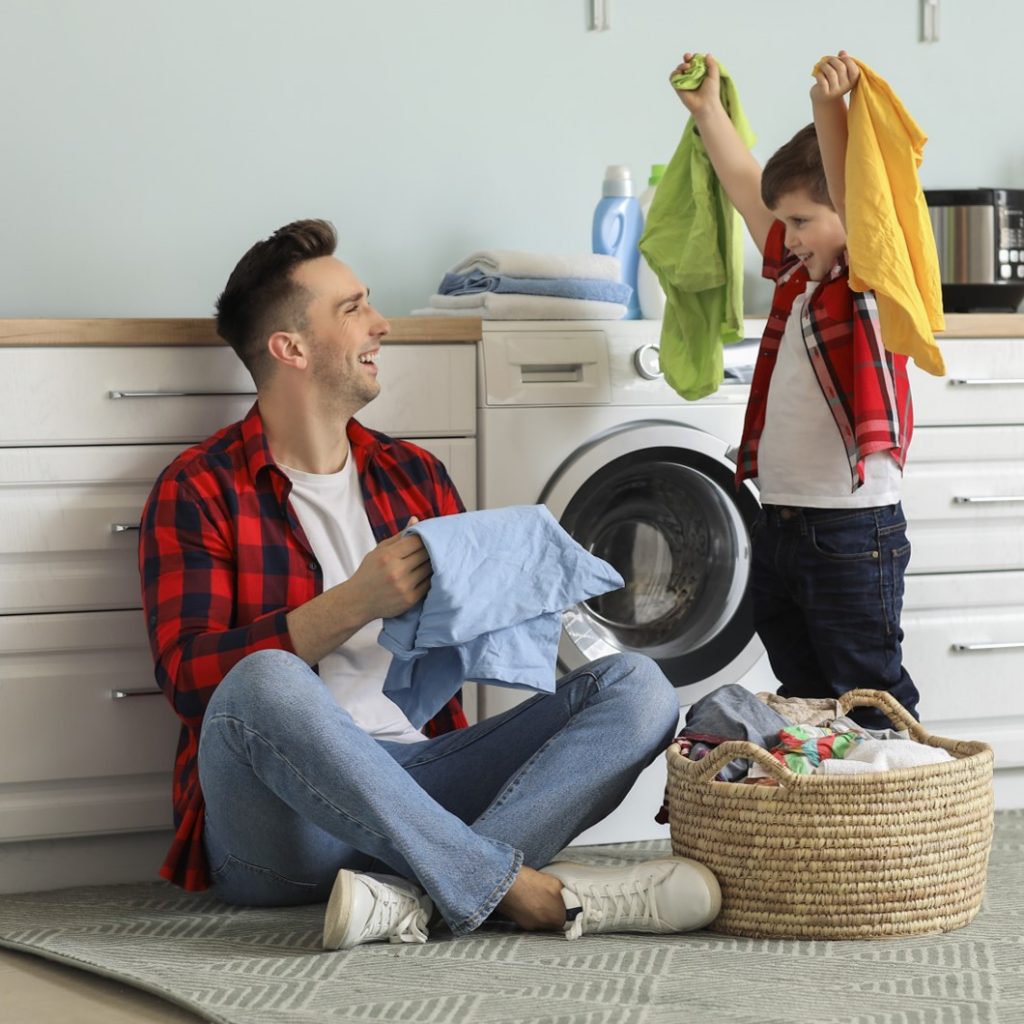 While you’re sorting laundry…
While you’re sorting laundry…
…ask your child to help you sort the clothes into piles of more or less, into different colors, by whose laundry it is, or by item characteristics (i.e., anything with two arm holes or two legs). You might also ask your child to help you put a specific quantity of clothing into the laundry hamper and then count with them as they do it.
While you’re tidying up a room…
…ask children to pick up a set number of objects and count with them as they do it. This not only helps motivate them toward an end goal but also reinforces one- to-one counting. Besides counting a set number of objects, you can also count the number of steps you each took to pick up each of the objects or to complete the cleanup task.
While you’re preparing meals…
…let your young child help, and weave in simple math lessons. If you’re baking, for example, measure the flour in three separate cups. Have your child count the cups (reinforcing the concept of one-to-one correspondence). Then ask “How many?” after they’ve counted the cups, and follow up with, “If we count from left to right, do we still get the same number of cups of flour?” (reinforcing the concept of order irrelevance).
While you’re setting the table for dinner…
 …enlist your child’s assistance and ask math-related questions as you prepare the table. For example, you might ask: “What shape is the dinner plate?,” “How many colors are on the placemat?,” and “Do we have enough spoons? We need four.” If you’re having a guest, that’s another opportunity for a mini math challenge: “Grandma is coming to dinner tonight, so we’ll need an extra plate at the table. Usually we have four plates, but we’ll need one more. How many plates will we need?”
…enlist your child’s assistance and ask math-related questions as you prepare the table. For example, you might ask: “What shape is the dinner plate?,” “How many colors are on the placemat?,” and “Do we have enough spoons? We need four.” If you’re having a guest, that’s another opportunity for a mini math challenge: “Grandma is coming to dinner tonight, so we’ll need an extra plate at the table. Usually we have four plates, but we’ll need one more. How many plates will we need?”
While your child eats meals with you…
…engage in math-infused conversations about parity (same) and magnitude (more or less). Vary the proportions on your plates so your child can make judgments just by looking. Ask questions like “Do we have the same number of baby potatoes on our plate?,” “Are there more blueberries on your plate or in the bowl?,” and “I just ate one spoonful of squash. Are you going to have one too?”
While you’re cleaning up after dinner…
…let your child help with things like wiping down surfaces, putting utensils away, and bringing dishes into the kitchen after a meal. To reinforce the concept of ordinal numbers during simple cleanup tasks, try conversation starters like this: “First, can you please bring your plate? Second, please bring me your placemat. (Show the child one and then two fingers.)”
While your child has a bath…
 … look for ways to practice math skills before and during the bath. Have your child count to three when helping you pour the soap to make bubbles in the tub. They can also count bubbles in the tub, the number of toys in the water with them, and squirts of shampoo or body wash. If you have a wall clock in the bathroom, use it to help your child watch for time elapsed while in the tub. (You can also set a clock or timer on your phone or tablet to keep track of time together.)
… look for ways to practice math skills before and during the bath. Have your child count to three when helping you pour the soap to make bubbles in the tub. They can also count bubbles in the tub, the number of toys in the water with them, and squirts of shampoo or body wash. If you have a wall clock in the bathroom, use it to help your child watch for time elapsed while in the tub. (You can also set a clock or timer on your phone or tablet to keep track of time together.)
While your child gets ready for bed…
…count the steps in their nightly routine: turning down the sheets, climbing into bed, fluffing their pillow, organizing their stuffed animals, turning on night lights, giving hugs and kisses to end the day. Adding a routine count to some of these items can make for a more predictable pattern of events, and it can calm a child as well as reinforce counting skills. A light on a timer is also a useful tool—kids can count in anticipation of the light going out.
While you’re reading a bedtime story…
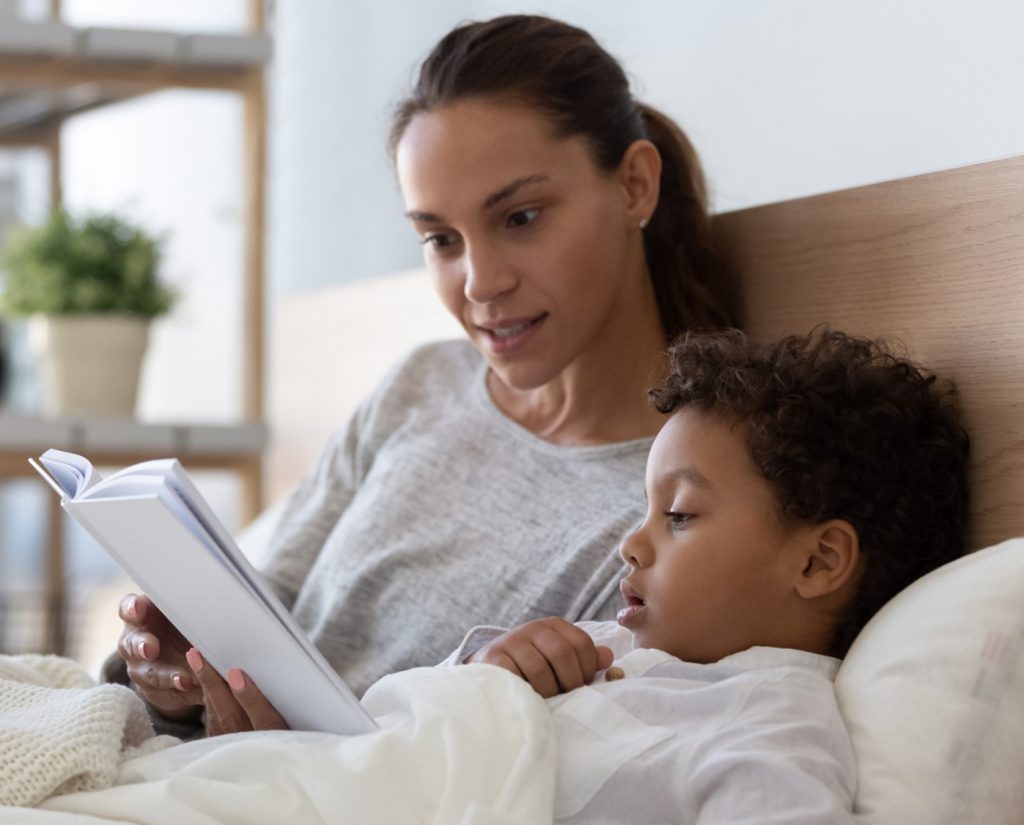 …look for ways to talk about math concepts. A good way to do this is to find bedtime stories that explicitly incorporate counting, shapes, and other mathematical concepts. (You can find a helpful list of 40 math-related children’s books here.) With a little creativity, you can make math talk a part of any bedtime story—for example, if you’re reading a book about a boy searching for his missing pet frog through a forest, you and your child can count the number of animals he meets along the way.
…look for ways to talk about math concepts. A good way to do this is to find bedtime stories that explicitly incorporate counting, shapes, and other mathematical concepts. (You can find a helpful list of 40 math-related children’s books here.) With a little creativity, you can make math talk a part of any bedtime story—for example, if you’re reading a book about a boy searching for his missing pet frog through a forest, you and your child can count the number of animals he meets along the way.
What’s your favorite way to slip math lessons into daily routines with young children? Add your idea in the comments below!
GET THE BOOK
 Pick up Let’s Talk About Math and learn more about using purposeful play with kids to promote mathematical thinking and get them ready for formal math instruction. Packed with easy, no-fear strategies any adult can use, this book will help all the teachers in a child’s life foster critical early math knowledge and school readiness.
Pick up Let’s Talk About Math and learn more about using purposeful play with kids to promote mathematical thinking and get them ready for formal math instruction. Packed with easy, no-fear strategies any adult can use, this book will help all the teachers in a child’s life foster critical early math knowledge and school readiness.

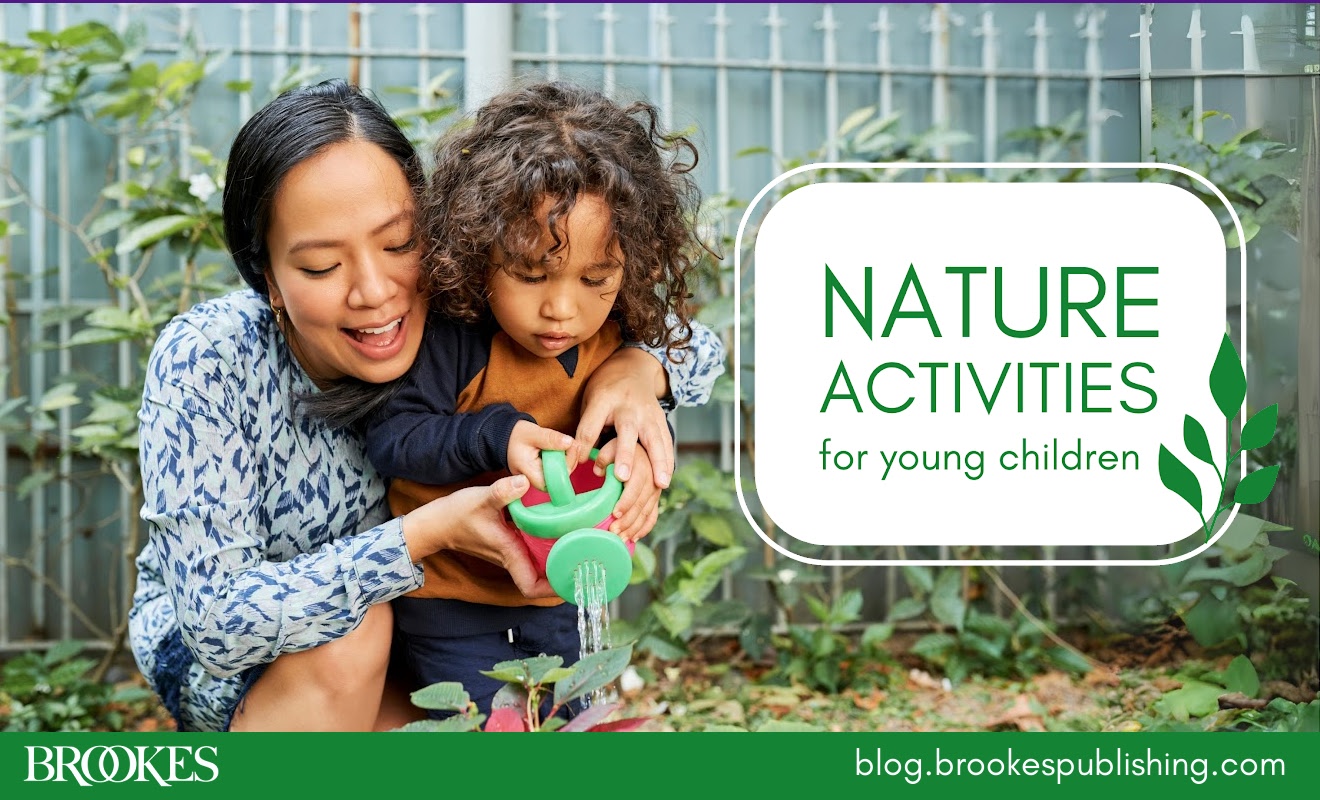
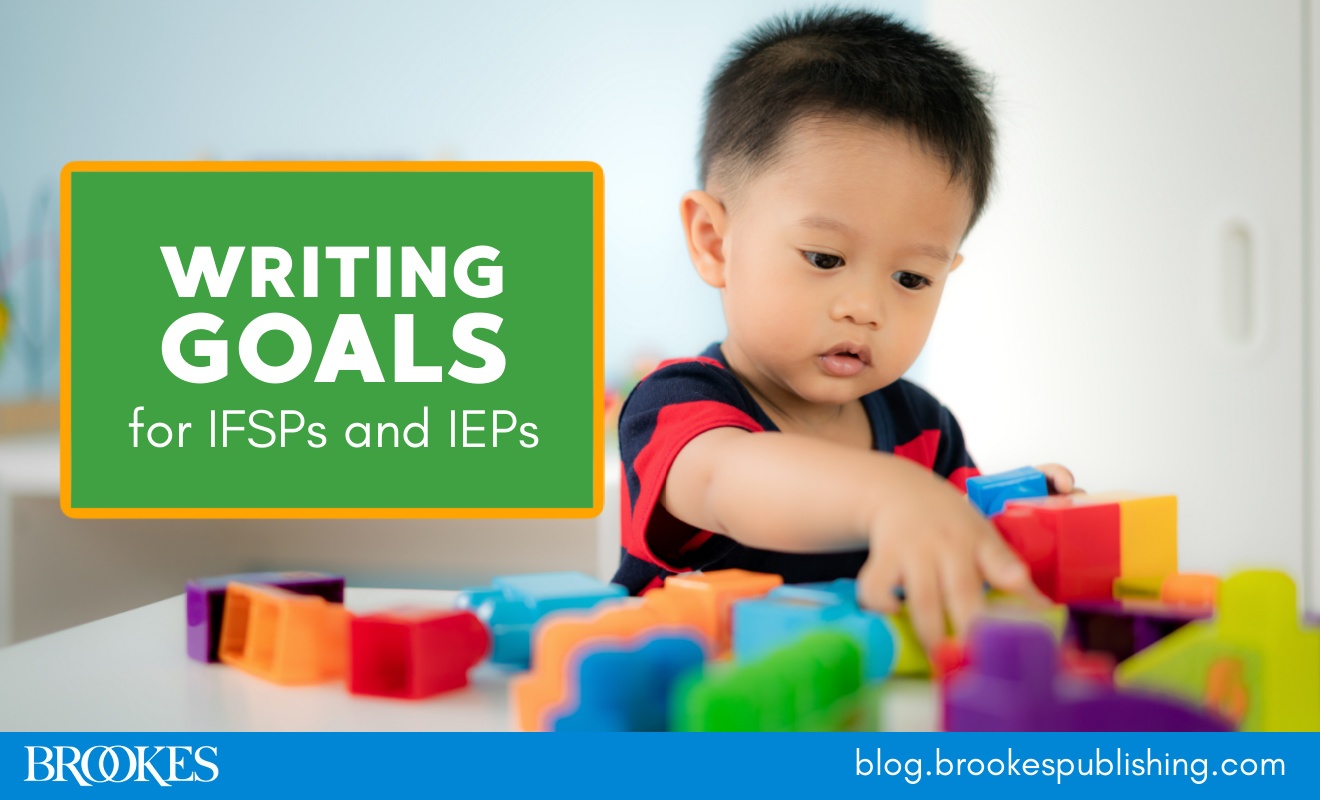

Write a Comment
Your email address will not be published. Required fields are marked *
comments
Jacob Noah says
Those are some really helpful tips! I think you can teach them math while baking together as well. Doubling recipes will require multiplying or measuring a ½ cup or a ¼ teaspoon will get them working with easy fractions. At the simplest level, you can ask them to count chocolate chips. They would love that!
jlillis says
Great idea, Jacob!
Louise says
Great suggestions! Using/making a calendar for family events and birthdays. Playing spotto in the car to look for a shape or color or item. There's lots of maths at the playground - spatial, positions, speed, time, counting turns, counting steps up the ladder of the slide, countdown before pushing on the swing, how many times to push. And all the songs and rhymes with numbers in them....
Post a Comment